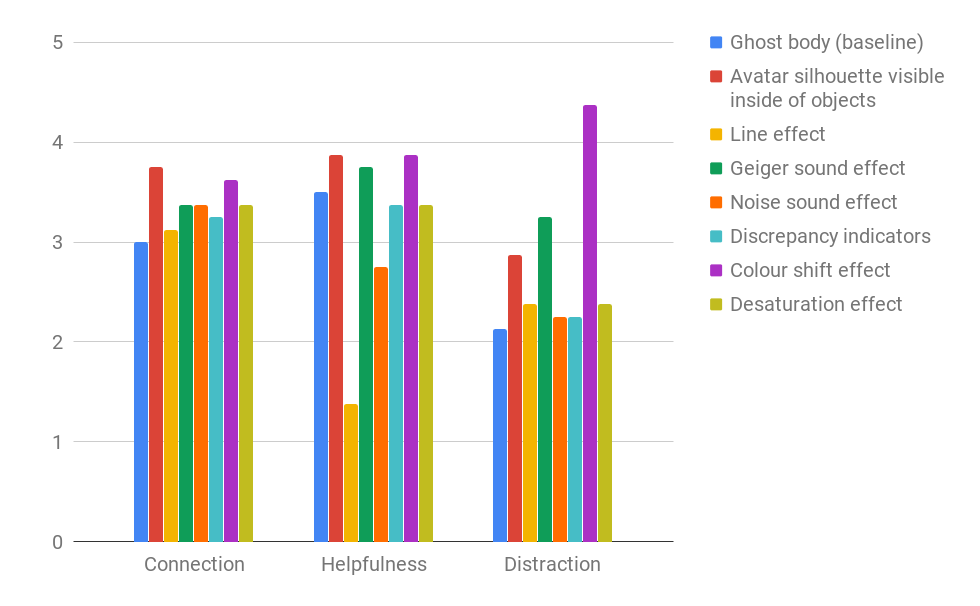Author: | Jason Janse van Rensburg |
|---|---|
| Supervisor: | Prof. Gudrun Klinker |
| Advisor: | M.Sc. Sandro Weber |
| Submission Date: | 15.8.2019 |
Abstract
As virtual reality increasingly finds more use cases, methods of improving the experience beyond graphical fidelity have to be investigated. One such improvement is giving the user a full virtual body, to make him feel part of the virtual world. Problems, however, are created when the user tries to interact with the virtual world with his virtual body, but but without the interaction having any effect on his real body. There has been research into preventing, or encouraging the user to resolve, situations in which his real and virtual body are not in sync, but the focus has largely been on the head and hands. Recently, hardware has become widely available that also allows tracking of any other object, such as the user’s feet. In this thesis, techniques of alerting the user to, and encouraging him to resolve, such discrepancies between his real and virtual body will be investigated, and implemented in the Neurorobotics Unity3D Client, with a focus on the feet.
Results/Implementation/Project Description
Various visual, auditory and haptic feedback mechanisms for discrepancies between the virtual and real body were implemented into the Neurorobotics Unity3D Client:
- Render interior of objects
- Silhouette of user avatar visible inside of objects
- Blur user's vision
- Fade user's vision to black
- Connect virtual to real limb with a line
- Haptic effect
- Geiger sound effect
- Noise sound effect
- Discrepancy indicators
- Colour shift effect
- Desaturation effect
More detailed descriptions can be found in section 7.1 of the full thesis.
Implementation details can be found in section 7.2, the full source code with setup instructions can be found here: https://github.com/VoodaGod/Bachelorarbeit (mirrored from https://github.com/HBPNeurorobotics/Unity3D-Client/tree/VirtualEmbodiment)
These feedback mechanisms were evaluated for discrepancies at the feet in a user study. The procedure and results are discussed in detail in chapter 8.
The ratings go from 0 (low) to 5 (high). It can be seen that in general, the most helpful feedback mechanisms also are the most distracting. This shows the difficulty of reaching the initial goal of maximizing helpfulness of the effects in resolving discrepancies and connection felt towards the virtual body while minimizing distraction which causes, for example, loss of immersion.
Conclusion
Using such feedback mechanisms can improve the sense of embodiment for the user, however sensible and perhaps synergetic combinations of visual, auditory and haptic effects should be selected and evaluated in the future, maybe even combined with hardware not currently available yet.
Thesis PDF:
Final Presentation Slides:
